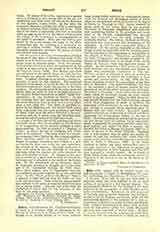

Belloy, JEAN-BAPTISTE PE, Cardinal–Archbishop of Paris, b. October 9, 1709, at Morangles in the Diocese of Beauvais; d. in Paris, June 10, 1808. Although of an ancient family of no mean militaryfame, young Belloy preferred an ecclesiastical career, made his classical and theological studies at Paris, where he was ordained priest, and received the degree of Doctor in Theology in 1737. In the ministry he shone more by his virtue than by his learning. Sweetness of character, enlightened and moderate zeal, unswerving fidelity to the principles and traditions of the Church, characterized him through life, and rendered even his early ministry remarkably fruitful. His bishop, Cardinal de Gevres, appointed him vicar-general and archdeacon of his cathedral. In 1751 he was consecrated Bishop of Glandeves. At the famous Assembly of the French Clergy of 1755, he took sides with the moderate party and contributed to the restoration of tranquility in the Church of France. Dissensions occasioned by the Bull “Unigenitus” had become so great in the Diocese of Marseilles that, at the death of the saintly Bishop de Belsunce, there was imminent danger of schism. In this emergency a chief pastor of consummate prudence and tact was needed, and Bishop de Belloy was accordingly transferred to that see. Without sacrifice of principle or duty, by gentleness, tact, and justice, he gained the confidence of both parties and restored peace. In July, 1790, the National Assembly decreed the suppression of the Diocese of Marseilles. The bishop withdrew, but sent to the assembly a letter of protest against the suppression of one of the oldest episcopal sees of France. He retired to Chambly, a little town near his native place, where he remained during the most critical period of the ‘Revolution. When, in 1801, the sovereign pontiff decided that the French bishops should tender their resignation in order to facilitate the conclusion of the Concordat, he was the first to comply, setting an example which exercised great influence over the other bishops. Napoleon, highly pleased with this act of devotion to Church and State, appointed the nonagenarian bishop to the See of Paris. Notwithstanding his extreme age he governed his new diocese with astonishing vigour and intelligence, reorganized the parishes, provided them with good pastors, and visited his flock in person. He restored the Crown of Thorns (August 10, 1806) to its place of honor in the Sainte Chapelle. Napoleon was so well satisfied that he asked and readily obtained for him the cardinal’s hat, which Pius VII placed on the prelate’s venerable head in a consistory held in Paris, February 1, 1805. At his death Cardinal de Belloy had spent seventy-five years in the holy ministry to the edification of all and the evident satisfaction of both Napoleon and Pius VII, then engaged in deadly conflict. He is buried in Notre Dame, Paris, where the monument erected by Napoleon in his honor is one of the finest in the cathedral.
CHARLES B. SCHRANTZ.

